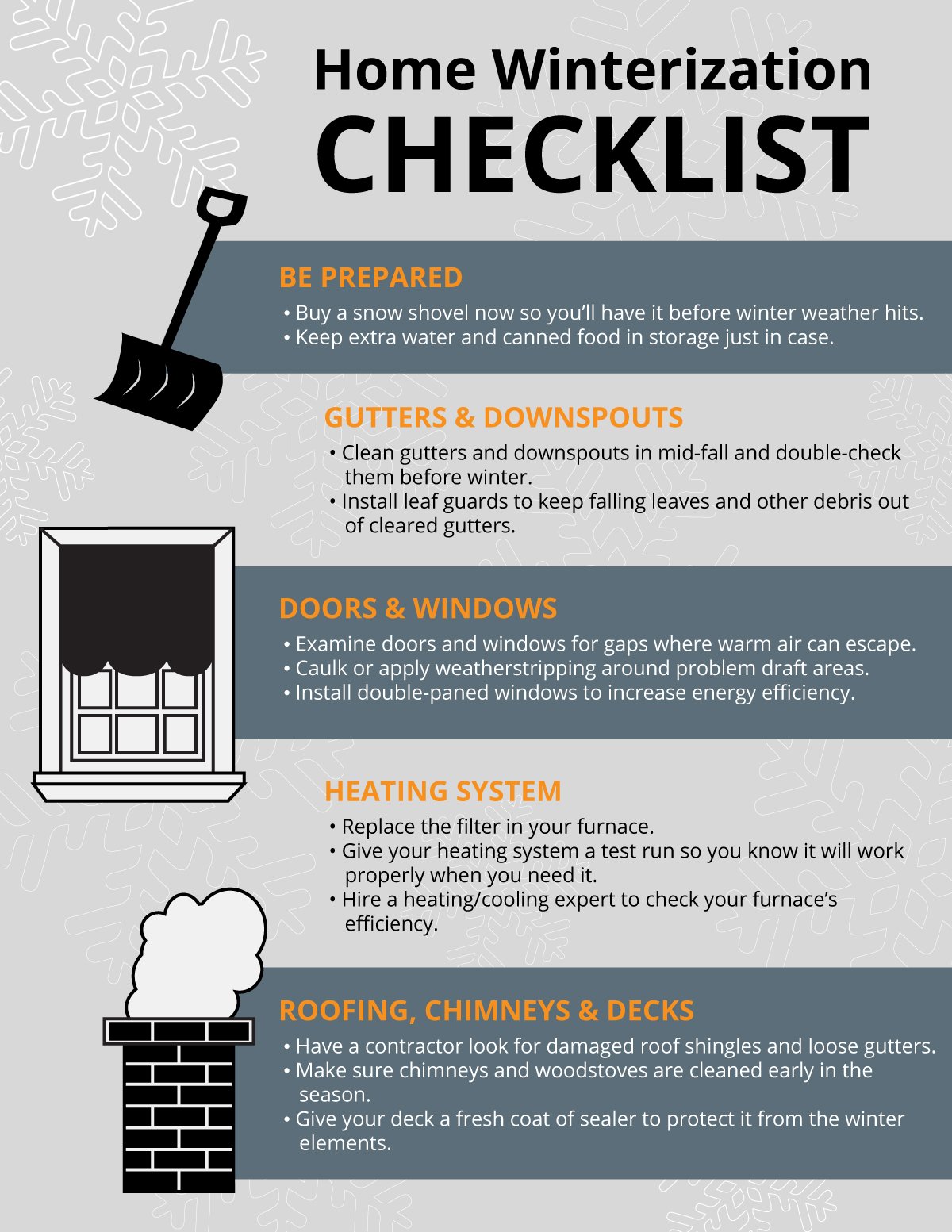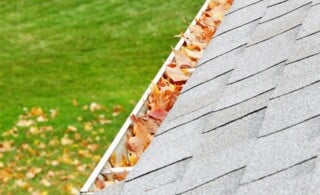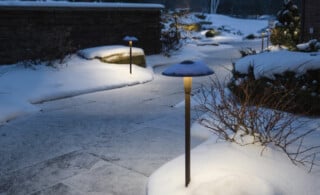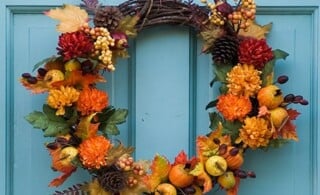
As cold weather approaches, it is important to take a few preventative measures to protect your home through the chilly months. Winterizing is generally a task that can be done relatively inexpensively, but will make a big difference in how comfortable your home is, and could end up saving you money on energy bills, too. In fact, many very effective home weatherproofing jobs are something that homeowners can complete without professional help.
Easy Home Weatherproofing
Some small weatherproofing jobs require little to no “handiness”, but can make a real difference once cold weather hits. By doing these things before the snow flies, you’ll be saving yourself some hassle (and possibly some money, too!):
- Clean gutters and downspouts in mid-fall and double-check them before winter.
- Replace the filter in your furnace.
- Close any vents in your home that may have been opened for the warm weather.
- Disconnect hoses from outside faucets and turn off the water.
- Buy a snow shovel and other winter supplies before the messy weather hits.
- Keep extra water and canned food in storage just in case.
- Test your heating system, so that you know it will work properly when you need it.
- Give your deck a fresh coat of sealer to protect it from the winter elements.
Ready to start your Home Winterization?
Find ProsHome Weatherproofing Inspections
Though some homeowners might tackle these jobs themselves, there’s no substitute for a professional eye to ensure home efficiency through the cold winter months:
- Check the attic, walls, and basement for adequate insulation.
- Feel around electrical outlets and switch-plates for cold air, add insulation where necessary.
- Look around doors and windows for gaps and potential places where warm air can escape.
- Caulk or apply weatherstripping around problem draft areas.
- Find a roofing contractor to look for damaged roof shingles and loose gutters.
- Have a local heating/cooling expert look at your furnace if you are unsure of its efficiency.
- Clean chimneys and woodstoves early in the season.
- Test the flue for each fireplace for a tight seal when closed.
Weatherproof Windows
Though there are many places in the home where heat can escape and cold air can enter, windows are one of the biggest culprits. In older homes, especially, having weatherproof windows can make a marked difference in your energy costs and how comfortable your living areas feel. Installing weather stripping costs around $255 on average, but in some instances, you might only need a bit of caulk to weatherproof windows. If your windows are well past their prime, you may also consider replacing them with energy-efficient double paned windows to create a more efficient space.
 Fall Home Maintenance Checklist
Fall Home Maintenance Checklist  Easy Winter Home Maintenance & Repair for Under $1,000
Easy Winter Home Maintenance & Repair for Under $1,000  11 Thanksgiving Home Upgrades You’ll Want to Gobble Up
11 Thanksgiving Home Upgrades You’ll Want to Gobble Up  Spring Maintenance Checklist – More Than Cleaning
Spring Maintenance Checklist – More Than Cleaning  The Definitive Home Maintenance Checklist (+ Printables)
The Definitive Home Maintenance Checklist (+ Printables) 

Often neglected is one of the most important components of a cooling system the condensing unit outside that churn away in the heat of summer. This component needs a little attention, too, as winter approaches. very nice infrographic
-If you can’t afford to purchase new windows, there is a specific plastic sheeting kit (sorry can’t remember the brand name) which comes with tape and is easily and quickly installed on each window using a blodryer which will minimize drafts. Having heavy curtains and keeping them closed also helps.-
-Buy two shovels if you can. One for pushing snow and the other for lifting snow. The different styles, make the work faster and also help to save your back from overwork. There are even special shovels for your roof available which will ‘rake’ the snow off of your roof. Their long light poles make the job easy and you use this tool while standing at ground-level. This is in case there is too much snow weight on the roof .
-Keep a bag or box of ‘ice-melter’, preferably not a salt product. This will deal with ice-build-up on sidewalks, door-steps for safety reasons. In my Canadian city, an injured person can sue you if they fall on walks located on your property or the city sidewalk in front of your residence that you are responsible for keeping ice-free.
-Buy a box of ‘Little Hotties’ for your hands and feet. Popping these into your boots and mitts (they don’t work with gloves) before you go out, helps you to stay out longer, without freezing your fingers or toes. Frozen fingers and toes are painful, to say the least.
Use a small candle to check for drafts of escaping heat along the top of all exterior walls and some “suspect” interior walls on upper floors. Remove any crown molding and fill any gaps with minimum expanding foam. The hot air in a home rises and will ‘leak” out at a much higher rate than most people would thing. This is mostly a problem with out side walls, but air can also pass up through gaps in interior walls on upper floors and into the attic. Any warm air which passes out of a home is replaced by cold air infiltrating into a home.
-If you can’t afford to purchase new windows, there is a specific plastic sheeting kit (sorry can’t remember the brand name) which comes with tape and is easily and quickly installed on each window using a blowdryer which will minimize drafts. Having heavy curtains and keeping them closed also helps.-
-Buy two shovels if you can. One for pushing snow and the other for lifting snow. The different styles, make the work faster and also help to save your back from overwork. There are even special shovels for your roof available which will ‘rake’ the snow off of your roof. Their long light poles make the job easy and you use this tool while standing at ground-level. This is in case there is too much snow weight on the roof .
-Keep a bag or box of ‘ice-melter’, preferably not a salt product. This will deal with ice-build-up on sidewalks, door-steps for safety reasons. In my Canadian city, an injured person can sue you if they fall on walks located on your property or the city sidewalk in front of your residence that you are responsible for keeping ice-free.
-Buy a box of ‘Little Hotties’ for your hands and feet. Popping these into your boots and mitts (they don’t work with gloves) before you go out, helps you to stay out longer, without freezing your fingers or toes. Frozen fingers and toes are painful, to say the least.